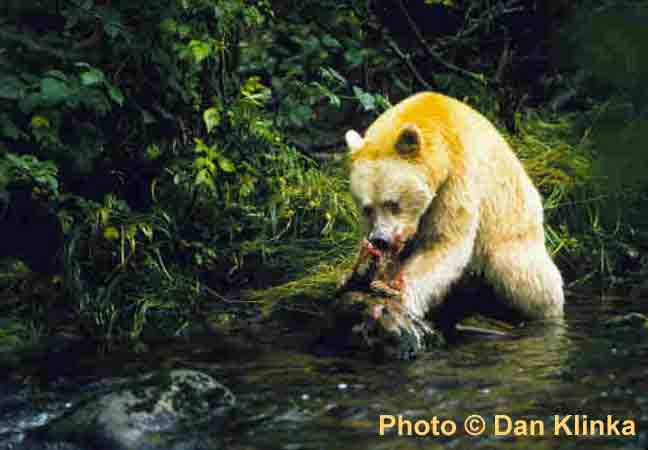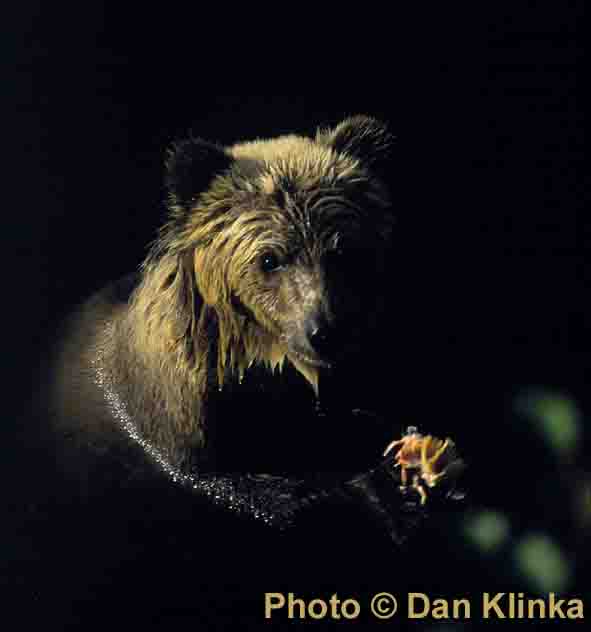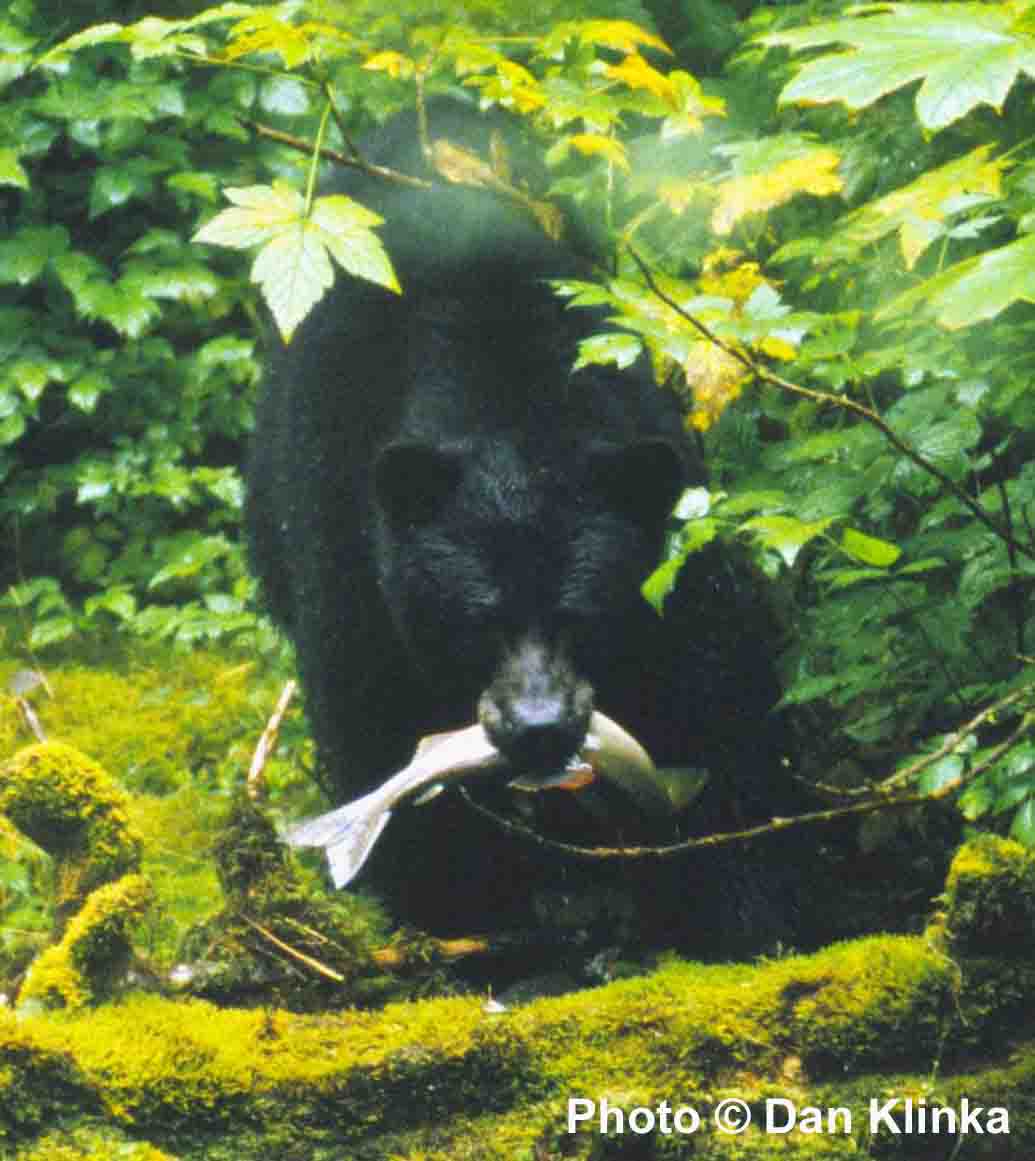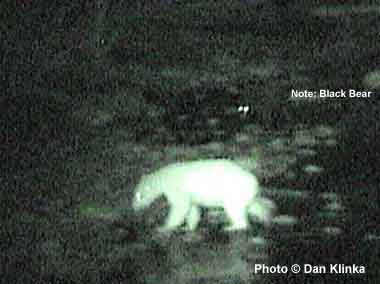Diurnal and nocturnal foraging behaviour of coastal bears
Dan Klinka
MSc Student
Department of Biology
University of Victoria

|
On
the west coast of North America, bears are major consumers of salmon
and are important agents of salmon
nutrient transfer
from aquatic to terrestrial habitats. The salmon spawning
period is critical to coastal bears as they receive most (33-94%)
of their yearly protein from salmon, and this positively effects their
body size, population productivity, mean litter size, and population
density.
|

|
|
Reimchen observed extensive nocturnal foraging by bears in salmon streams on the southern end of Haida Gwaii (Queen Charlotte Islands) and on average, bears were more successful at salmon capture during darkness than during daylight. My research interests focus on the behavioural ecology of mainland coastal black bears and grizzly bears during daylight and darkness and how the foraging behaviour contributes to the nutrient flow dynamics inherent to these salmon systems. At present, I have found that these bears also fish throughout the day and night, and have slightly higher capture success during darkness than in daylight.
We suggest that darkness
is a preferred foraging period as a consequence of increased access
to high quality feeding areas, reduced evasive tendencies of the
salmon and high capture efficiencies. Bears appear to exploit the
salmon spawning period to maximize consumption rates of an ephemeral
resource. |

|

|
Part of
this research is also focussed on the ‘spirit bear’ a white
morph of the coastal black bear. The spirit bear occurs at about
10-20% frequency on Princess Royal Island and Gribbell Island near
the mid coast of British Columbia. We are investigating the behavioural interactions
between the colour morphs during daylight and darkness and examining niche
interactions through the analyses of nitrogen and carbon isotopes. |
| As
well as expanding our understanding of the life history and ecological
role of the largest carnivores in North America, this research may
also provide basic insight into alternate sensory modes used by tetrapods
during nocturnal behaviour. |
|